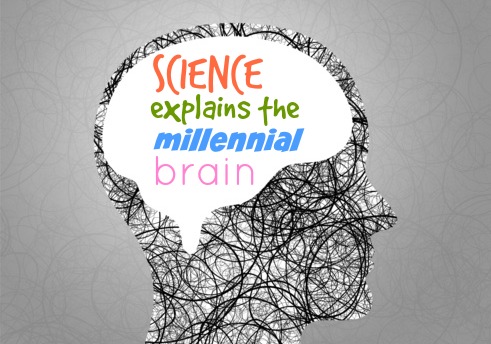While Millennials have been heavily criticized for their obsession with technology, they have been evolving as collaborators, multitaskers, and consumers of complex information. In short, they are becoming exactly the kind of employees and eventually future leaders that an organization can leverage in today’s interconnected world.
Organizations need to learn to see the benefits of such behavior and harness it. After all, by 2025, this generational cohort will, by some estimates, account for nearly 75% of the workforce. Smart leaders should start seeing how to capitalize on their assets, integrate them into the organization, and leverage and experiment with their talents cross-generationally.
How Millennials tick: What we know
As a fervent ‘experimentalist,’ and someone with a background in neuroscience, I [Judith Glaser] like to start with what makes Millennials tick. Here are some recent scientific research findings on the millennial brain that I’ve been sharing with leaders and organizations to which I provide Conversational Consulting. Two of the characteristics I find most fascinating to explore and challenge are ‘social sharing’ and ‘multi-tasking.’
Social Sharing makes them feel good.
Social sharing lights up a part of the brain called the temporoparietal junction which stimulates the production of oxytocin, “the feel-good hormone.”
Millennials, more than any other generation, have grown up interacting online and with higher levels of ‘interaction dynamics’ than other generations. They have learned that by posting, IM-ing, liking, and sharing with each other – conversations driven by technology can give them an even higher oxytocin boost than interacting in person.
In fact, the frequency and feel good of ongoing contact through technology has the ability to elevate oxytocin and dopamine, mimicking what happens when we have a drug addiction.
Younger brains crave what’s multi-sensory.
The popular press, and even scientific research has suggested that humans can't actually multi-task unless one of the activities in which they are engaged in is routine.
Additionally, people who regularly use multiple forms of media are also more prone to distraction than those who do not regularly access multiple forms of media.
Using EEG’s studies as the foundation, Nielson’s report sheds light on the thinking patterns of the Millennial brains during ‘high-attentional activities.’ The report explains, “Younger brains are most stimulated (better attention capture, engagement, and memorability) with elements of dynamism such as rich media, lighting or rotations, to cut through their perception threshold.
Younger brains also have high multi-sensory processing capacity—which makes them very amenable to (and often seek) multi-sensory communications, especially with interaction—such as search tasks, interactive sites.”
Furthermore, the EEG readings measure fluctuations in the brain’s electrical current — and indicate that Millennials are also more receptive to more complex messaging — dynamic ads, for example — than previous generations.
Interpreting the data, we believe that Millennials seem to be better at fielding higher levels of information than their elders and are therefore able to process, integrate and act on data more quickly and to ignore distractions when necessary.
Studies at Stanford University confirm this by showing that heavy multi-taskers are more aware of various forms of input than are light-multi-taskers.
Question: How can you harness the Millennial brain in your organization?
This article originally appeared on Entrepreneur and has been republished with permission.
Consider Ryan Jenkins to be your next Millennial/Generation Y or Generation Z keynote speaker by clicking here...
![]()






